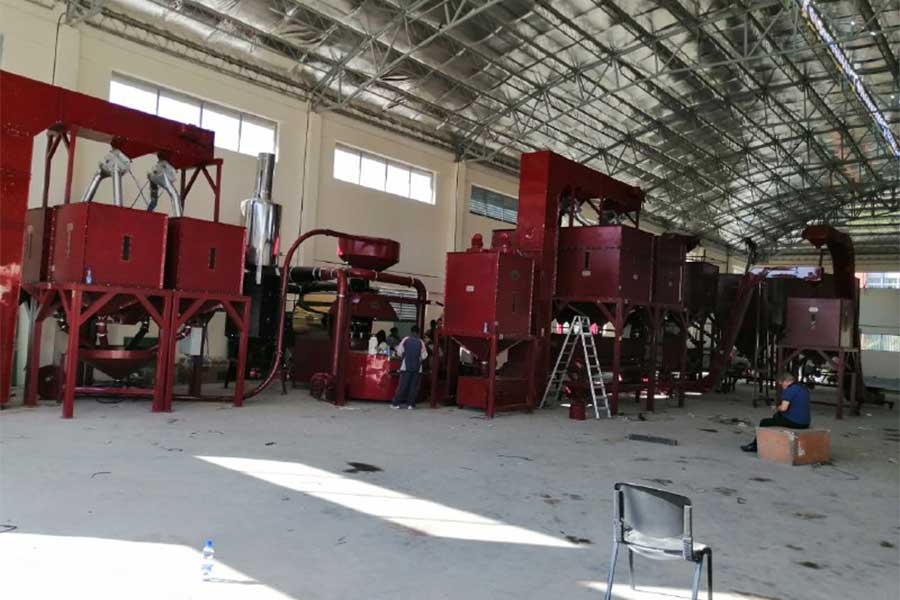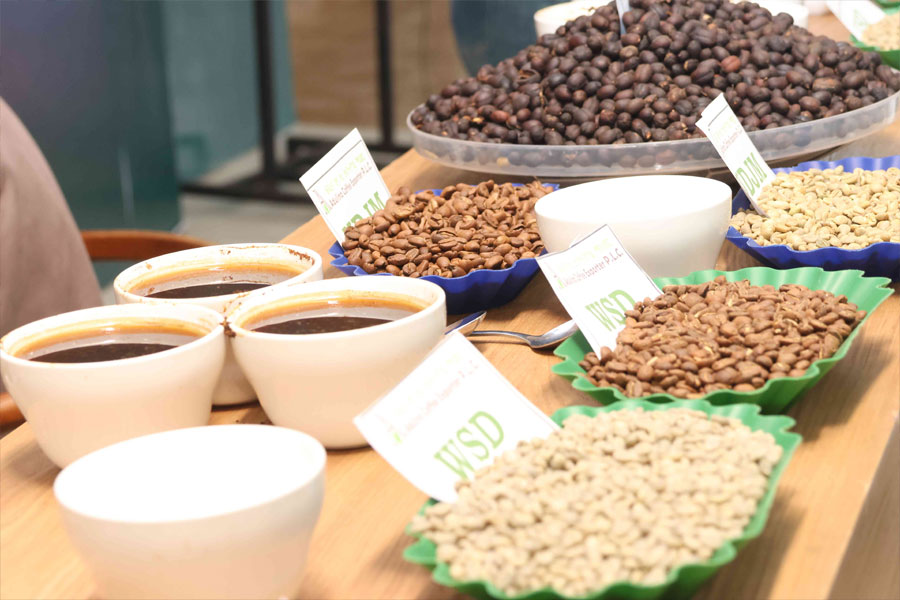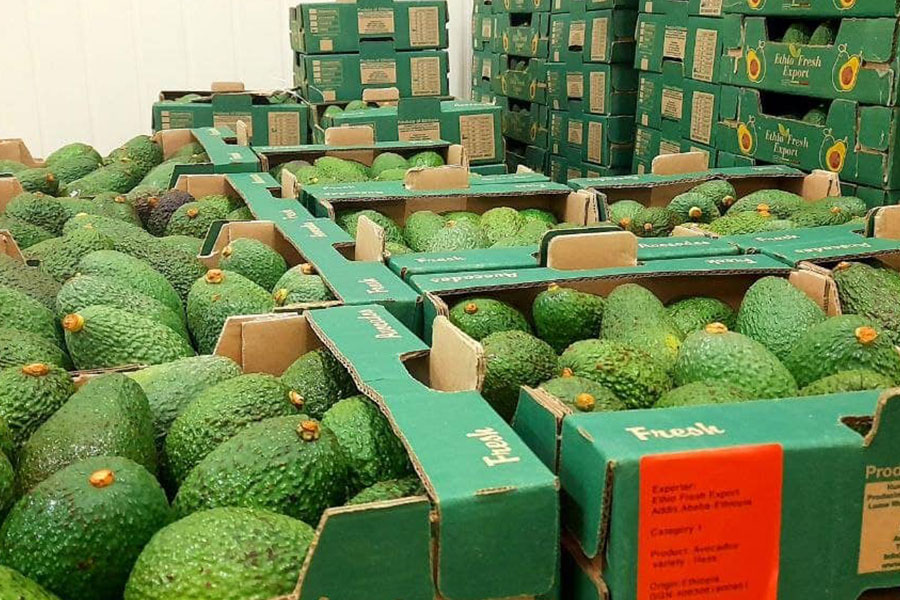
Commentaries | Jul 24,2021
A drop in rainfall has left a third of farmlands in the youngest regional state unploughed almost two months into the Mehirharvest season. Less than 60pc of the one million hectares of farmland in the South Western Regional State had been sowed by the end of last week.
Desperately needed rains across the region have thus far failed, preventing farmers from planting crops beginning in June. Close to 300,000hct of land remains unploughed, according to Admasu Awoke, deputy head of the regional agriculture bureau. During the last harvest season, 2.8 million smallholder farmers in the Regional State harvested 2.6 million tonnes of crops. Maize accounted for half this harvest, constituting a little more than 10pc of the corn produced countrywide over the same period.
The shortfall in the rain is feared to exacerbate conditions in the most vulnerable households, particularly those in the Welayta, Konso, and Halaba zones. Over 35,000hct in Welayta remains idle.
Mathios Churko, 52, is among the more than 100,000 farmers left praying for rain. The father of six wholly depends on the maise and wheat he grows on two hectares in Diguna Fango Wereda.
“I haven’t planted anything,” he told Fortune. “The field is still dry and unsuitable for ploughing.”
Climate changes have caused himto lose over 30qtl of maise he expected to harvest during the shorter Belg season earlier this year.
Assefa Shanko, head of the agriculture bureau, disclosed that farmland cultivated by close to 42,000 farmers had been affected by insufficient rainfall. Over 40pc of the harvest during the Belg season has been lost, he disclosed.
Meteorologists report the rainfall across much of the region is at its lowest levels in decades.
“The region is likely to experience below-normal precipitation,” said Asaminew Teshome (PhD), a senior advisor at the National Meteorology Agency.
The regional administration expects the shortfall to continue. Its officials have allocated 55 million Br to support affected farmers.
Lack of rain had a devastating impact on the neighbouring Sidama Regional State during the last Belg season. Farmers there cultivated close to 60,000hct; over a third of maise and soybean harvests were lost due to the dry conditions. Looming trouble with the supply of agricultural inputs spells further trouble for Sidama’s output.
The same farmers are expected to harvest over 320,000tns of crops from 90,000hct during the Mehir season. However, only 60pc of the chemical fertilisers destined for their plots have arrived. Fertiliser distribution has been sluggish elsewhere as well.
Nearly 96pc of the 1.2 million tonnes of fertilisers procured for the Mehir season have arrived in the country. The state-owned Ethiopian Agricultural Businesses Corporation, the sole fertiliser importer, supplies the input to unions and cooperatives, distributing it to farmers. Soaring costs are a severe concern to farmers. Over eight million smallholder farmers face retail prices of up to 4,900 Br a quintal, nearly triple what they had paid last year.
The worries do not end there. Last month, federal authorities announced that over 50,000hct farmland are infested with pests. Farms in the South Western, Benishanhul-Gumuz, and Gambella regional states are the hardest hit.
Federal and regional authorities say they are distributing agrochemicals to areas most affected by pest infestation. Over a quarter of the affected land has been sprayed with chemicals. However, the mounting costs for agrochemicals have become a barrier, as prices for pesticides doubled to 4,000 Br a litre over the past two years.
Experts observe that the challenges could potentially harm agricultural export performance and worsen already dire food insecurity.
Shemeles Araya (PhD) is an agricultural economist who lectures at Hawassa University. He noted that poor rainfall is likely to harm coffee production. Sidama and South Western regional states are the primary coffee-producing areas.
The expert urges officials to act quickly to save harvests. Coffee remains the country’s most valuable commodity, generating 1.4 billion dollars last year, nearly a third of total export revenues.
International organisations and humanitarian agencies warn that food insecurity in the country’s eastern and southern regions could spiral as drought worsens. Failed rainy in four consecutive seasons has placed 2.5 million people in need of emergency food assistance in the Somali, Oromia, and Southern regional, according to the Food & Agriculture Organisation (FAO).
This has fuelled already surging food prices; food inflation registered 35pc, the Ethiopian Statistics Service reported last month.
In Jigjiga, the seat of the Somalia regional administration, prices for major food items such as maise, sorghum and wheat have climbed by 40pc in the last two months, reveals a report from the FAO.
The situation in the north is a little different.
Farmers in the Tigray, Afar and Amhara regional states, who are reeling from 18 months of militarised conflict, are bracing for heavy rains often accompanied by floods. In Amhara Regional State, farmers are expected to cultivate 14.3 million tonnes of crops in the Mehir season. Close to 90pc of the region’s farmland has been ploughed. However, farmers in Tigray Regional state are yet to sow their fields as they wait for fertiliser procured by FAO to trickle into the region. By the end of last month, the agency had bought 19,000tns of fertiliser, enough to meet demand from close to 380,000 smallholder farmers. Over a third has been distributed.
The challenges are daunting, but federal officials appear unfazed.
The problems are not beyond the capacities of regional administrations, says Essayas Lema, director of crop development at the Ministry of Agriculture.
During an address to Parliament last month, Prime Minister Abiy Ahmed (PhD) lauded his administration’s efforts to contain the drought while criticising international partners and aid agencies for lack of support. The authorities expect farmers to harvest 40 million tonnes of crops this Mehir season. It is nearly 20pc higher than what farmers reported having harvested last year.
PUBLISHED ON
Aug 20,2022 [ VOL
23 , NO
1164]

Commentaries | Jul 24,2021

Fortune News | Dec 28,2019

Viewpoints | Jan 15,2022

Agenda | Oct 13,2024

Featured | Oct 30,2021

Fortune News | Feb 15,2020

Fortune News | Mar 09,2019

Editorial | Dec 07,2019

Fortune News | Mar 19,2022

Fortune News | May 23,2021

Dec 22 , 2024 . By TIZITA SHEWAFERAW
Charged with transforming colossal state-owned enterprises into modern and competitiv...

Aug 18 , 2024 . By AKSAH ITALO
Although predictable Yonas Zerihun's job in the ride-hailing service is not immune to...

Jul 28 , 2024 . By TIZITA SHEWAFERAW
Unhabitual, perhaps too many, Samuel Gebreyohannes, 38, used to occasionally enjoy a couple of beers at breakfast. However, he recently swit...

Jul 13 , 2024 . By AKSAH ITALO
Investors who rely on tractors, trucks, and field vehicles for commuting, transporting commodities, and f...

Jul 5 , 2025
Six years ago, Ethiopia was the darling of international liberal commentators. A year...

Jun 28 , 2025
Meseret Damtie, the assertive auditor general, has never been shy about naming names...

Jun 21 , 2025
A well-worn adage says, “Budget is not destiny, but it is direction.” Examining t...

Jun 14 , 2025
Yet again, the Horn of Africa is bracing for trouble. A region already frayed by wars...